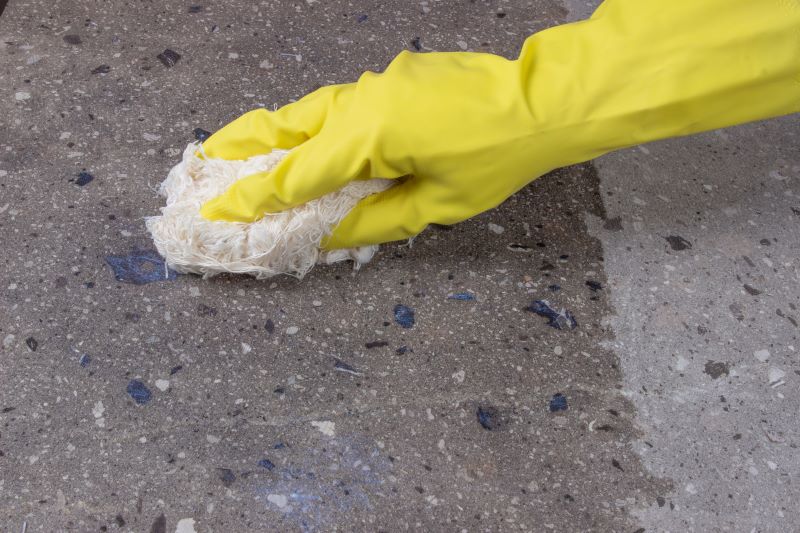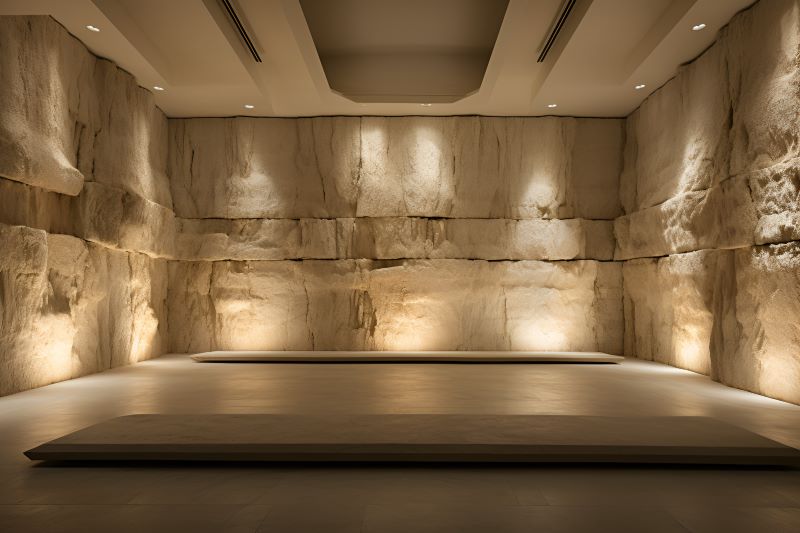With its creamy, fossil-flecked texture, limestone brings a refined elegance to any space. For centuries, architects and designers have favored this singular material to add sophistication, adorning everything from cathedral walls to mansion floors with its ornate beauty.
But without proper care, limestone’s susceptibility to staining and erosion can diminish its aesthetic appeal over time. Protecting this captivating stone with a sealant is key to preserving its luminous, timeless grace for ages to come. Here’s why:
Safeguarding against weathering and wear
A sedimentary rock composed of calcium carbonate and other substances, limestone is highly susceptible to erosion and deterioration when exposed to moisture, freezing temperatures, and other environmental factors. Prolonged contact with water can dissolve limestone over time, while the expansion of water into ice through freeze-thaw cycles creates stresses that cause cracks and fractures.
Wind and rain wear down exterior limestone through the scouring effect of blown particulates and the gradual chemical breakdown of acidic rain. Without a protective sealant, intricate decorative limestone details on building facades, or less visible construction materials like masonry walls, are vulnerable to the elements.
Over years or decades, intricate ornate carvings, subtle natural variations in the stone, and overall structural integrity slowly erode. The handsome patina limestone gains with age can shift from an elegant, weathered look to outright deterioration. Sealing blocks the absorption of liquid and moisture to dramatically slow down weathering.

Resisting stains for easier maintenance
In both interior and exterior spaces, limestone sealing is necessary to prevent weathering and difficult-to-remove stains. The porous, exposed surface of materials like driveways, limestone tiles, countertops, flooring, and backsplashes allows oils, dyes, and pigments to soak in deeply. A surface spill that would easily wipe away from granite or marble may become a permanent headache on unsealed limestone.
Salad dressing, wine, grease, and other household liquids can seep into pores within minutes of a spill. Over time, the oxidization and trapped moisture cause an unsightly discoloration. No amount of scrubbing cleanser can restore staining from frequent use over months or years without sealing. The protective sealant provides a critical barrier, allowing spills to remain on the surface for quick cleanup rather than absorbing deeper into the stone. This barrier retains the original smooth texture and pristine color.
Enhancing natural beauty and durability
What draws many designers to limestone in spaces like bathrooms, fireplace mantels, flooring, and kitchen backsplashes is its natural aesthetic beauty—the very quality that sealing maintains over years of use. Limestone offers incredible variation from piece to piece based on mineral composition, featuring softly swirling or sharp delineations in tone. Fossils of ancient marine organisms add dimensional detail. In some limestone, calcite crystals reflect ambient light. All of these mesmerizing characteristics stand vulnerable without sealant to protect their integrity.
The sealant also strengthens structural stability, preventing surface erosion and damage in high-traffic areas like patios or staircases. Tiny abrasions from foot traffic, cracks from repeated stress, and small nicks and scratches from blown grit or furniture drag—all pose a risk of accelerated deterioration without sealing.
Limestone surfaces sealed properly are more scuff-resistant and better able to withstand heavy use without showing wear and tear. Sealing the stone ensures continued visual delight rather than developing a worn, damaged appearance requiring restoration.
Deterring mold and mildew
Moisture poses one of the greatest threats to preserving limestone over the long term. Bathrooms, basements, and exterior features in damp climates—anywhere prone to perpetual moisture—put limestone at high risk for mold, mildew, and algae growth without sealing. Fungi and bacteria feed on minerals and organic material found in stone, sinking tendrils deep into pores to take hold and propagate extensively if left unchecked.
Once established, mold infestation presents a challenging removal process requiring intense cleaning solutions that are hazardous to health and often damage the structural integrity of limestone. Preventing moisture absorption and penetration through sealing provides critical protection.
So, when building a house with limestone, it is important to remember that sealing helps maintain a healthier environment both for the stone and for the inhabitants. That is because it keeps invasive growth at bay before it gains a foothold. It also retains visual appeal rather than allowing the visible surface discoloration, stains, and decay mold ingress causes over time.
Realizing long-term cost savings
Though sealing requires moderately increasing the budget when installing or renovating with limestone, this protective measure saves substantially on long-term costs by extending life and minimizing maintenance needs. The initial sealant application pays dividends for decades before reapplication becomes necessary while helping avert expensive repairs or replacement from preventable damage.
Unsealed limestone, whether exterior construction elements or interior design finishes, inevitably shows signs of deterioration much earlier, sometimes in less than a decade. Without sealing, issues like staining, cracking under stress, or thermal shock may arise—necessitating earlier intervention.
Intensive cleaning, visual restoration attempts, patching damaged areas, or replacing whole slabs or features carries far greater expense than preventative sealing. Well-maintained limestone often lasts 50-100 years before wearing beyond reasonable repair capabilities. Sealing pays its comparatively small price many times over in durability.
Adding value through conscientious care
Prospective home buyers and tenants clearly notice the visual difference between well-kept limestone surfaces versus aged, damaged ones—and may attribute the latter to general neglect. Sealing and careful maintenance retain the coveted aesthetic qualities of limestone that lend an air of elegance and style to any space. Surfaces keep a like-new appearance longer, bringing buyers peace of mind that the home or building has been conscientiously cared for against preventable damage over the years.
The minimal periodic investment of re-sealing also demonstrates attention to maintenance and willingness to protect valuable upgrade investments like limestone elements. Whether renovating an outdated bathroom, minimizing costly weather damage on a historic building facade, or elevating a commercial space, limestone imparts luxury and sophistication. Showcasing preserved limestone features bolsters resale value and desirability on the market compared to neglected alternatives that imply the possibility of hidden issues elsewhere.
In conclusion
It’s true—limestone’s vulnerabilities can complicate upkeep, putting its delicate beauty at risk. But regular sealing provides a reliable safeguard, giving this favored material the protective barrier it needs to maintain its sophisticated charm through the years.
Take the vital step of sealing, and allow limestone to enthrall for generations with its crystalline sheen and subtle fossils echoing eons past. Simple yet powerful, sealant lets timeless limestone endure, ensuring today’s floors, walls, and sculptures remain as lustrous and elegant as the day they were hewn.

